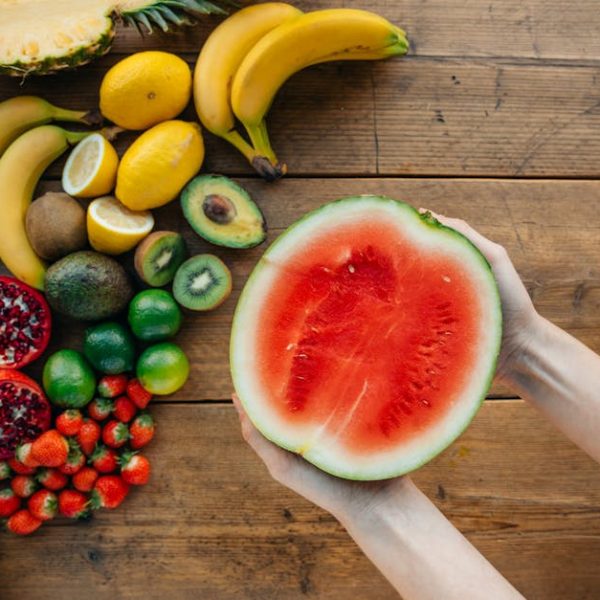When it comes to strawberries, proper handling from the get-go can make all the difference. One common misconception is that berries should be washed immediately after purchase. However, you should actually wait until just before you’re ready to eat or use them. This is because excess moisture can promote mold growth and speed up decay, reducing their overall shelf life.
Here’s a pro tip for you: washing strawberries in a vinegar solution – one part vinegar to three parts water – can actually help kill off mold spores and bacteria. Not only does this extend their freshness, but it also ensures they’re safe to eat. After soaking the strawberries for a few minutes, rinse them under cold water to get rid of any remaining vinegar taste.
In addition to proper cleaning, it’s crucial to remember to remove any spoiling or rotting strawberries from the bunch immediately. This prevents the spread of mold to healthy strawberries, maintaining the overall quality of the batch.
Storing Fresh Strawberries in the Fridge
Next on our list is refrigerator storage. Not every fruit fares well in the fridge, but strawberries are an exception. The cool temperature slows down the decay process, allowing them to stay fresh for longer. Just remember – don’t wash them until you’re ready to consume them!
When storing fresh strawberries in the refrigerator, follow these steps:
- Place the strawberries in a breathable container. This could be the one they came in or a container lined with paper towels to absorb any excess moisture.
- Put the container in the main part of the fridge, not the crisper. Strawberries like cold, but not the high humidity of a crisper drawer.
- Set your refrigerator temperature to around 32–36°F (0–2°C), if possible.
Now, many people ask whether it’s better to store strawberries on the counter or in the fridge. To help you decide, let’s weigh the pros and cons:
| Fridge Storage | Counter Storage | |
|---|---|---|
| Pros | Longer shelf life, perfect for bulk purchases | Enhances flavors as berries are kept at room temperature |
| Cons | Can cause slight flavor loss | Quickens ripening process, leading to a shorter shelf life |
Each method has its place, but for longer storage, the fridge wins out.
Extending Shelf Life: Strawberries in the Freezer
If you’ve got a bumper crop of strawberries or just want to stock up while they’re in season, freezing is your best bet. This method dramatically extends their shelf life, allowing you to enjoy strawberries in your smoothies, desserts, or homemade jams even in the off-season.
Before freezing, stem the strawberries and give them a good wash. Pat them dry thoroughly, as moisture can lead to freezer burn. Now, don’t just toss them into a bag and call it a day – we have a pro tip for you!
First, flash-freeze the strawberries by spreading them in a single layer on a parchment paper-lined baking sheet. This prevents them from sticking together, making it easier for you to pull out the exact amount you need later. Once they’re frozen hard, transfer the strawberries to an airtight container or freezer bag for long-term storage. They can stay good like this for up to a year!
Preserving Strawberries: Canning, Pickling, and Jamming
Another excellent option to extend the lifespan of your strawberries is through preserving techniques like canning, pickling, and jamming. Not only do these methods allow for long-term storage, but they can also give a unique twist to the flavor and texture of the fruit.
To get started, here are some items you’ll need:
- A large pot
- Jars with lids and rings
- Strawberries
- Sugar, vinegar, or pectin
Each method requires a slightly different process, but the general principle is to fill sterilized jars with strawberries (and a preserving agent, like sugar or vinegar), seal them, and then boil the jars to create a vacuum seal.
Follow these best practices for safe preserving:
- Always use high-quality, unblemished fruit.
- Ensure all the lids and jars are sterilized before use.
- Follow the preserving recipe exactly. Changing the sugar, vinegar, or pectin amount can lead to an unsafe end product.
Strawberry Storage: Common Mistakes and How to Avoid Them
Storing strawberries might sound pretty straightforward, but there are some common pitfalls that can severely shorten their shelf life – or worse, spoil them entirely.
For instance, storing strawberries in the crisper drawer is a common mistake. Despite being a common place for other fruits, the high humidity of a crisper drawer can promote mold growth for strawberries, making them spoil faster. Always store them in the main part of the fridge or on the counter instead.
Let’s discuss further pros and cons of different strawberry storage methods:
| Fridge Storage | Freezer Storage | Canning/Jamming | |
|---|---|---|---|
| Pros | Longer shelf life, retains freshness | Extremely long shelf life, great for bulk strawberries | Extremely long shelf life, can change strawberry flavor/texture for variety |
| Cons | Might slightly alter flavor | Requires preparation (e.g., flash freezing), changes texture | Requires effort and equipment, changes texture |
Remember, the key to preserving the wholesome goodness of your strawberries is to adopt the storage method that best fits your needs! Be it fresh, frozen, or preserved – delectable strawberries can be enjoyed all year round.
So, go ahead and explore the different possibilities of storing strawberries. With these expert tips and tricks, you can now savor the fresh and sweet taste of strawberries anytime, unaffected by the changing seasons. Cheers to fresh fruits, preserved flavors, and extended joy!
Key Takeaway:
- Fresh strawberries should be gently handled and only washed right before eating or using them for cooking. Soaking strawberries in a vinegar solution can extend their freshness.
- The best way to store fresh strawberries is in the fridge, but avoid washing them until they’re ready to consume and do not store them in a crisper drawer.
- You can store strawberries in the freezer to extend their shelf life significantly. Before freezing, stem and wash strawberries and then flash-freeze them.
- Canning, pickling, and making jam are also practical methods to preserve strawberries, providing a twist on the fruit’s flavor and texture.
- Common mistakes to avoid when storing strawberries include storing them in the crisper drawer and not removing any spoiling or rotting strawberries from the bunch.
Regardless of your storage method, the key to preserving the delicious taste and freshness of strawberries is approaching it with the right knowledge. With these expert tips prepared by experienced professionals, your strawberries will remain sweet and fresh for much longer. Savor the taste of strawberries, irrespective of the changing seasons!
FAQs
Q: How does a vinegar solution kill mold spores on fresh strawberries?
A: Vinegar has antifungal and antibacterial properties that can help kill off mold spores and bacteria on the strawberries’ surface. Remember to rinse the berries under cold water after the vinegar bath to remove any remaining vinegar taste.
Q: Why shouldn’t strawberries be stored in the crisper drawer?
A: Crisper drawers often have a higher humidity level, which can promote mold growth on strawberries, leading to a shorter shelf life.
Q: Can the vinegar smell get rid of strawberries after washing them in a vinegar solution?
A: Yes, rinsing strawberries in cold water after a vinegar bath helps to eliminate any remaining vinegar smell or taste.
Q: Why should strawberries be flash-frozen before long-term freezer storage?
A: Flash-freezing strawberries prevent them from sticking together in the freezer, so you can conveniently take out individual strawberries as needed.
Q: Are there any specific safety measures to bear in mind when canning, pickling, or jamming strawberries?
A: Yes, always use high-quality, unblemished strawberries. Ensure all your lids and jars are sterilized before use and adhere meticulously to the preserving recipe. Don’t modify the sugar, vinegar, or pectin amounts, as changes could potentially lead to an unsafe preserved product.
Don’t forget to share this guide with other strawberry lovers! For more expert tips on other fruits and storage methods, check out our additional posts.





